Select Language
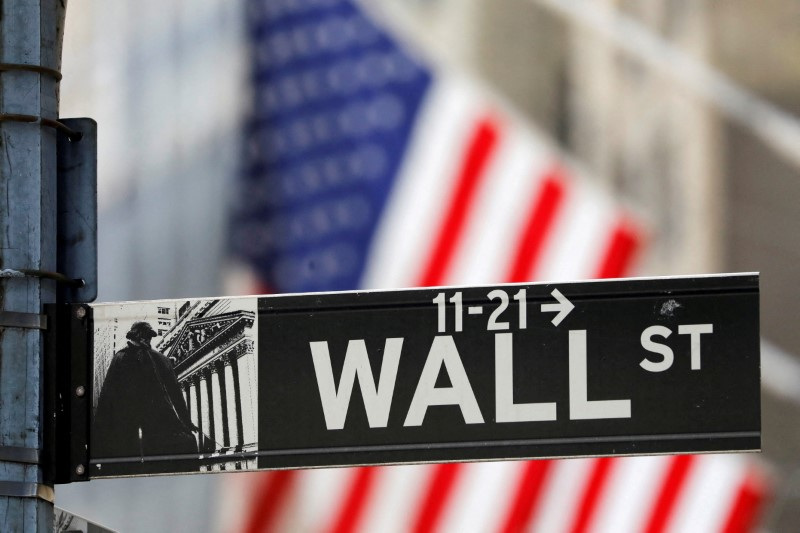
(Reuters) - Stifel expects the S&P 500 index to peak in the first half of 2025, then fall 10% to 15% in the second half of the year, the brokerage said on Thursday citing concerns about slower economic growth and sticky inflation.
The brokerage expects the U.S. stocks benchmark to drop to mid-5,000s late next year, a bearish view on the market when compared to Goldman Sachs and Morgan Stanley (NYSE:MS), which see the index end 2025 at 6,500. It was last trading at 6,075 points.
A correction in stocks could be triggered by the U.S. real gross domestic product slowing to 1.5% in the second half of 2025 and core personal consumption expenditure inflation staying above the Federal Reserve's target, Stifel strategists noted.
"The environment does not appear conducive to continued equity mania and we prefer more defensive sectors," they added.
The S&P 500 has had a strong run this year, rising about 27% so far, boosted by the so-called 'Magnificent 7' stocks rising on the artificial intelligence boom and anticipation of lower interest rates.
Stifel expects the Fed to pause its rate-cutting cycle, holding rates at 4% at its January policy meeting, posing risks to the markets around mid-2025.

WASHINGTON (Reuters) - U.S. mortgage rates dropped to the lowest level in nearly two months this week, a trend that if sustained could boost home sales in the coming months.
The average rate on the popular 30-year fixed-rate mortgage fell to 6.60%, the lowest level since the week ending Oct. 24, from 6.69% last week, mortgage finance agency Freddie Mac (OTC:FMCC) said on Thursday. It has now declined for three straight weeks. The rate averaged 6.95% during the same period a year ago.
"The combination of mortgage rate declines, firm consumer income growth and a bullish stock market have increased homebuyer demand in recent weeks," said Sam Khater, Freddie Mac chief economist. "While the outlook for the housing market is improving, the improvement is limited given that homebuyers continue to face stiff affordability headwinds."
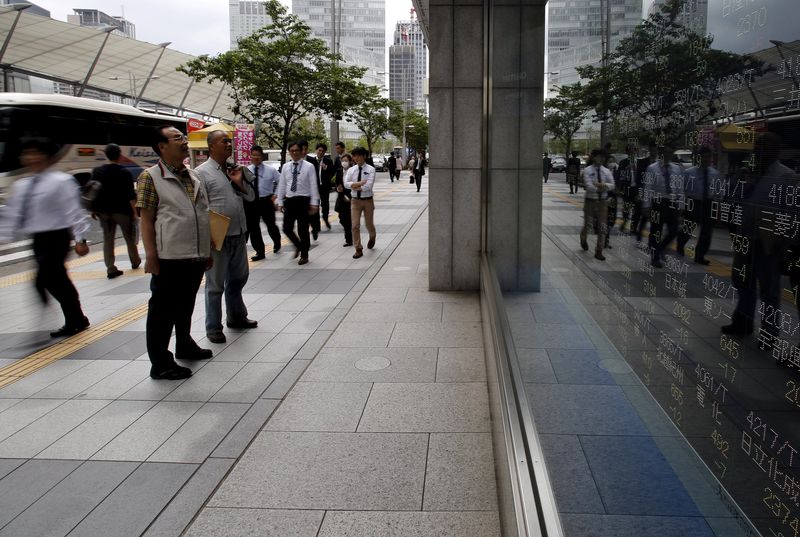
Investing.com-- Most major Asian stocks rose on Thursday tracking an overnight rally in technology shares on Wall Street, as U.S. inflation data cemented bets for an interest rate cut by the Federal Reserve next week.
U.S. consumer price index data on Wednesday showed inflation rose at its fastest pace in seven months in November, but was largely in line with expectations. This led to markets pricing in a 98% chance for a 25 basis point rate cut next week, up from 81% seen last week, according to CME Fedwatch.
U.S. stock indexes closed higher overnight, with the NASDAQ Composite hitting a record high above 20,000 points. Gains were fueled largely by technology stocks.
Wall Street futures fell slightly in Asian trade.
Chinese shares rise, CEWC awaited for stimulus cues
China’s Shanghai Composite index was 0.4% higher, while the Shanghai Shenzhen CSI 300 index gained 0.6%. Hong Kong’s Hang Seng index jumped 1.3%.
Focus was on China’s China’s Central Economic Work Conference (CEWC), a two-day meeting set to conclude later on Thursday. Markets hope to get details on fresh stimulus measures from the meeting, after China's Politburo offered its most dovish signals yet on plans support economic growth.
Elsewhere, stock markets were largely mixed, with Philippine’s PSEi Composite index inching 0.3% lower, and Thailand’s SET Index rising 0.4%
India’s Nifty 50 Futures indicated a slight dip at open, while Indonesia’s Jakarta Stock Exchange Composite Index fell 0.4%.
Japan, S.Korea stocks buoyed by tech gains
Japan’s Nikkei 225 jumped 1.6% and TOPIX climbed 1.1%, with gains in heavyweight technology stocks. Sony Corp (TYO:6758) was up 2.7%, while Panasonic (OTC:PCRFY) Corp (TYO:6752) rose 1.5%.
South Korea’s KOSPI index rose 0.4%, with major tech stocks on the rise. However, ongoing political unrest in the country still kept investors on edge.
Media reports stated that South Korean police tried to raid President Yoon Suk Yeol's office on Wednesday, after he became subject to a criminal investigation over his attempt to declare martial law in the country.
Australian shares fall after jobs data spurs rate uncertainty
Australia’s S&P/ASX 200 fell 0.3% on Thursday after data showed that the country’s employment rose more than expected in November, as the labor market remained strong, while unemployment unexpectedly fell.
The data resulted in market participants further paring bets that the Reserve Bank of Australia would cut interest rates in the near term. Broad consensus is that the RBA will begin cutting rates in the second quarter of 2025.
The RBA on Tuesday had held rates unchanged, citing tight labor market conditions and stubborn underlying inflation in the county, although it did note that inflation was easing in line with expectations.
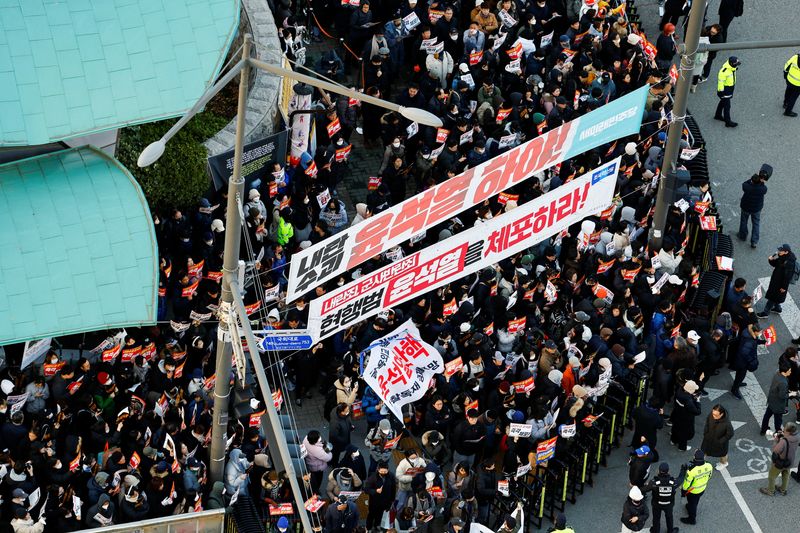
Fixes slug, no change to text)
By Hyunjoo Jin, Lisa Barrington and Heekyong Yang
SEOUL (Reuters) -From plastic surgery clinics to tour firms and hotel chains, South Korea's hospitality sector is wary of the potential impact of a protracted political crisis, as some overseas travellers cancel trips following last week's brief bout of martial law.
South Korea's travel and tourism industry, which generated 84.7 trillion won ($59.1 billion) in 2023, around 3.8% of GDP, has held up through previous bumps in the road, including a 2016 presidential impeachment and periodic tensions with North Korea.
But more than a dozen hospitality and administrative sources said the army's involvement in the latest political crisis was a serious development that could deter leisure and business travel, when the sector is approaching a full recovery in visitor numbers, which stood at 97% of pre-COVID levels as of October.
"There are concerns that safety issues in Seoul would throw cold water on the tourism industry," Seoul mayor Oh Se-hoon said on Wednesday while meeting tourism industry officials to discuss a fall in travel demand.
"There is a growing number of examples of foreign tourists cancelling visits to Seoul and shortening their stays," Oh said, before declaring "Seoul is safe", in English, Chinese and Japanese to the media.
Daily life and tourist activities have continued as usual, despite ongoing large protests, since President Yoon Suk Yeol rescinded his six hours of martial law on Dec. 4 after parliament voted it down, with analysts noting that South Korea's institutional checks and balances seem to be holding up.
Some tourists have since cancelled bookings, albeit not in great numbers, while others are enquiring whether they could pull out should the situation change, travel and hospitality sources said.
Accor (EPA:ACCP) hotel group, which includes the Fairmont and Sofitel brands, said it noted a "slight increase" in cancellation rates since Dec. 3, around 5% higher than in November.
The Korea Tourism Start-up Association said on Friday bookings for the first half of 2025 had already seen a sharp decline.
Rooms in previously fully-booked hotels in the capital Seoul have become available due to cancellations with some hotels "even lowering their rates and offering special deals to attract more bookings", said an inbound travel agency that asked not to be named due to the sensitivity of the matter.
A plastic surgery clinic in Seoul's upmarket Gangnam neighbourhood also said some foreign patients had cancelled visits since the martial law incident.
"We are not worried now, but if this situation continues, that would have an impact on foreign visitors," a clinic representative said, declining to be named.
South Korea is a top global destination for medical and plastic surgery tourism.
SOFT POWER
The latest political crisis also threatens to deal a major blow to the country's brand, which has been improving thanks to Korean culture and economic success, said Kim Wou-kyung, head of a government brand promotion agency.
The explosion to global prominence of South Korean drama, music and beauty, known as the "Korean Wave", plus a reputation for safety and global brands such as Samsung (KS:005930), are key forms of soft power that the government leverages to grow tourist numbers.
South Korea hopes to almost double the number of annual tourists by 2027 from 2019 levels to 30 million.
Part of the strategy is also to focus on group business travel for events including conferences and exhibitions, a sector known as MICE tourism, which could be impacted if the political crisis continues into early next year, said Ha Hong-kook, secretary-general at Korea MICE Association.
The parliament plans to vote on a motion to impeach Yoon on Saturday, a week after its first impeachment vote was defeated.
"If we get through this immediate, unprecedented period ... into a clear route to new elections, then I think actually the impact won't be that bad," said Andrew Gilholm, Director at risk consultancy Control Risks Group.
He said the country's reputation "might even be improved" long-term by displaying how it comes through the problems.
Su Shu, founder of Chinese firm Moment Travel in Chengdu, is also sanguine about travel demand for South Korea.
"No matter where there is chaos, there will be people who dare not go," Su said.
China is the largest source of foreign visitors to South Korea, followed by Japan and the U.S.
($1 = 1,433.0700 won)

In a recent report by Redfin (NASDAQ:RDFN), the median U.S. asking rent in November decreased to $1,595, a 0.7% drop from the previous year, marking the lowest level since March 2022. The decline in rent also represented a month-over-month decrease of 1.1%. This downward trend in rent prices has brought the median rent to a point that is 6.2% below the all-time high of $1,700 recorded in August 2022.
The report further detailed that rental affordability has seen some improvement, with November being the 19th consecutive month of year-over-year declines in the median asking rent price per square foot (PPSF), which fell by 2.2% to $1.79. This is the first instance of the median PPSF dropping below $1.80 since November 2021.
The rental market, which has been relatively stable over the last two years, is showing signs of a slight downtrend in recent months. This is partly attributed to a significant increase in the number of new apartments completed this year, which has been the most in over a decade. The completion of new apartments surged by 22.6% year over year in the second quarter, leading to a vacancy rate for buildings with five or more units climbing to 8% in the third quarter, the highest since early 2021.
Redfin Senior Economist Sheharyar Bokhari commented on the current state of the rental market, stating, "Renters in areas where construction has boomed are in a sweet spot right now. Affordability is improving as rents fall and wages rise, and there is increased choice with more and more new apartment buildings opening." Bokhari also noted that while construction is expected to slow down, the market could see rents rise again, but 2025 is anticipated to be favorable for renters, potentially widening the affordability gap between buying and renting.
The report also highlighted that median asking rents for smaller units, specifically 0-1 bedroom apartments, have decreased by 1.7% year over year to $1,450 a month, marking the lowest since November 2021. Two-bedroom apartments saw a 1.1% decrease to $1,671, and rents for apartments with three or more bedrooms dropped by 2.3% to $1,955.
When analyzing the price per square foot, the decrease was more pronounced, with 0-1 bedroom apartments experiencing the largest reduction of 2.5%, followed by 3+ bedroom apartments at 2.4%, and 2 bedroom apartments at 1.2%.
Looking at regional data, Sun Belt metros have continued to see the most significant declines in median rents. Austin, TX, led the drop with a 12.4% decrease, followed by Tampa, FL (-11.3%), Raleigh, NC (-8.4%), Jacksonville, FL (-7.5%), and Nashville, TN (-7%).
Conversely, rents have increased the most in Midwest and East Coast metros, where new construction has been less prevalent compared to the Sun Belt. The largest increases were observed in Cleveland, OH (10.6%), Louisville, KY (10.2%), Baltimore, MD (9.4%), Washington, D.C. (9.4%), and Providence, RI (9.3%).
This article was generated with the support of AI and reviewed by an editor. For more information see our T&C.
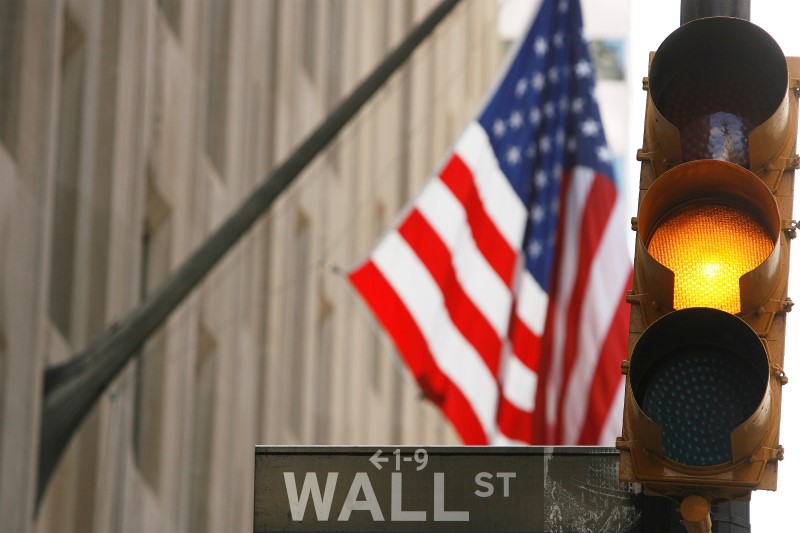
Investing.com-- U.S. stock index futures fell slightly on Wednesday evening as Wall Street cooled from record highs, with in-line consumer inflation data cementing expectations for a December interest rate cut.
Futures steadied after Wall Street indexes- particularly the Nasdaq- hit a record high during the session, with technology stocks rallying sharply on the prospect of lower rates in the near term. Tesla Inc (NASDAQ:TSLA) hit a record high, while market darling NVIDIA Corporation (NASDAQ:NVDA) surged over 3%.
Focus was now on upcoming producer inflation data due on Thursday, and the Federal Reserve’s December meeting next week.
S&P 500 Futures fell 0.1% to 6,085.75 points, while Nasdaq 100 Futures fell 0.2% to 21,754.0 points by 18:29 ET (23:29 GMT). Dow Jones Futures fell 0.1% to 44,167.0 points.
CPI data cements December rate cut bets
Consumer price index data showed inflation rose at its fastest pace in seven months in November. But the reading was largely in line with expectations, quelling some concerns that it would overshoot estimates.
This furthered bets that the Fed will cut interest rates by 25 basis points when it meets next week. Traders were seen pricing in a 98.1% chance for a cut next week, up sharply from the 81% chance seen last week, according to CME Fedwatch.
Focus is now on producer price index data, due on Thursday, which comes less than a week before the Fed’s final meeting for the year.
While the central bank is widely expected to cut rates next week, investors are less certain about its long term outlook on rates, especially in the face of sticky inflation.
Expansionary and protectionist policies under incoming President Donald Trump are also expected to drive up prices.
Wall St buoyed by tech gains
Wall Street was cheered by the prospect of lower rates in the near-term, with technology stocks rising the most. Speculation over less regulatory scrutiny towards the sector under Trump also spurred gains in tech, as did sustained optimism over artificial intelligence.
The NASDAQ Composite surged 1.8% to a record high of 20,033.61 points, while the S&P 500 rose 0.8% to 6,084.19 points.
The Dow Jones Industrial Average lagged, falling 0.2% to 44,148.56 points. The index was weighed chiefly by losses in major insurance and pharmacy benefit manager stocks, after lawmakers introduced a bipartisan bill to force health insurers to divest their pharmacy businesses.
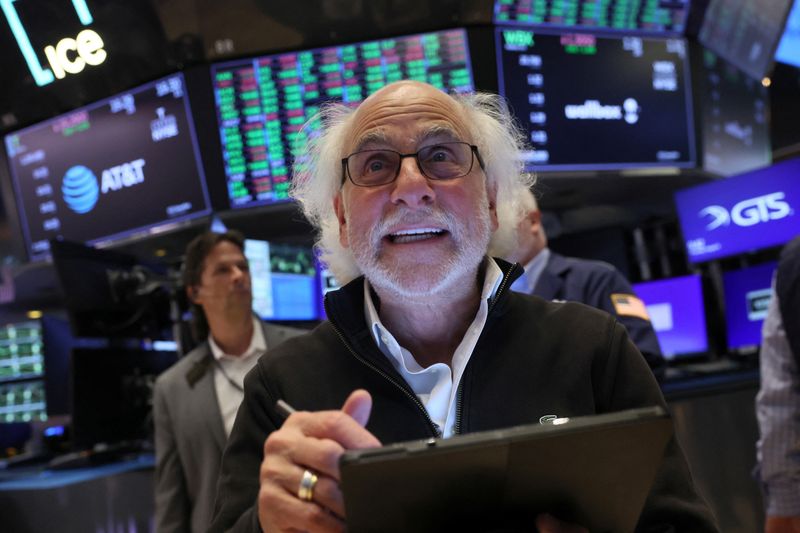
By Saqib Iqbal Ahmed, Suzanne McGee and Lewis (JO:LEWJ) Krauskopf
NEW YORK (Reuters) - The Nasdaq Composite Index hit 20,000 for the first time on Wednesday, putting an exclamation point on a year in which excitement over artificial intelligence and expectations of falling interest rates fueled a searing rally in technology stocks.
The tech-heavy index is up more than 33% on the year, driven by a cluster of giant technology-focused companies including Apple (NASDAQ:AAPL), Nvidia (NASDAQ:NVDA), Google-parent Alphabet (NASDAQ:GOOGL) and in recent weeks, electric carmaker Tesla (NASDAQ:TSLA). Wednesday’s gains came after a U.S. inflation report that cemented expectations of a Fed rate cut next week.
The index closed on Wednesday at 20,034.89, up 1.8% on the day.
While the rally has rewarded investors who went big on growth and tech, it has also stirred unease over rising valuations and the dominance of megacap stocks, which now have an increasingly heavier weighting in the index.
"There is clearly an aspect of a chase into year-end, where the winners ... keep winning," said Cameron Dawson, chief investment officer at NewEdge Wealth. "The question is if this momentum can persist into 2025, where stretched valuations, positioning, sentiment, and growth expectations could all present high bars to jump over to keep above-average returns going."
After plummeting in early 2020 when the pandemic brought global economic activity to a standstill, the index mounted a swift rebound as the Federal Reserve cut interest rates to near-zero and the U.S. unleashed waves of fiscal stimulus to help the economy.
It endured a sharp drop in 2022, falling 33% as inflation surged to 40-year highs and the Fed was forced to deliver a series of jumbo rate cuts. But higher rates did not bring on a widely-expected recession, and the index has soared by about 90% since then, stoked in part by increasing excitement over the business potential of AI.
Shares of Nvidia, whose chips are considered the industry's gold standard, are up more than 1,100% from their October 2022 low.
“The AI story still rings true and appeals to investors,” said Alex Morris, chief investment officer of F/m Investments. “These are the go-go stocks."
While the Nasdaq's valuation has climbed, it is still far from levels it reached during the dot-com bubble more than two decades ago.
The index trades at roughly 36 times earnings today, a three-year high and well above its long-term average of 27, according to LSEG Datastream. That is still well below the roughly 70 times the index's P/E ratio reached in March 2000, bringing a measure of comfort to investors comparing the two periods.
"The Nasdaq Comp’s latest rally pales in comparison to the late 90s/early 2000 experience, rising more gradually and does not yet look unsustainable as a result," Jessica Rabe, co-founder of DataTrek Research, said in a note on Wednesday.
Megacap stocks increasingly dominate the index. The top 10 companies by market value account for 59% of the Nasdaq, compared to 45% in 2020. The three biggest companies by weight are Apple, Microsoft (NASDAQ:MSFT) and Nvidia, which account for 11.7%, 10.6% and 10.3% of the index respectively.
While their surging share prices have buoyed the Nasdaq, the heavy concentration could present a problem for investors should Big Tech fall out of favor. The selloff in 2022, for instance, saw shares of index heavyweights Meta and Tesla fall 64% and 65% for the year respectively.
The Nasdaq has topped the other major U.S. stock indexes this year, propelled by big gains in heavily weighted names such as Nvidia, Amazon (NASDAQ:AMZN) and Meta Platforms (NASDAQ:META). The tech-heavy index's 33% climb in 2024 compares with over 27% for the S&P 500 and 17% for the Dow Jones Industrial Average.
Over the past decade, the Nasdaq has gained more than 320%, against a 200% rise for the S&P 500 and a 150% increase for the Dow.

Indonesia’s Jakarta Stock Exchange Composite Index rose 0.5%, while India’s Nifty 50 Futures indicated a marginal rise at open.
South Korea's KOSPI extended gains with a 0.6% rise, regaining some of the ground it lost on Monday and in the prior week. South Korean President Yoon Suk Yeol is under criminal investigation for insurrection following his controversial declaration of martial law earlier this month.
A slew of government measures, including injection of funds in the local market, have helped alleviate some concerns over the ongoing political crisis.
Japan shares fall as strong inflation fuels rate hike speculation
Japan’s Nikkei 225 fell 0.6%, while TOPIX was down 0.3%.
Data on Wednesday showed that Japan's wholesale inflation increased for the third consecutive month in November, as businesses faced higher labor and raw material costs. The reading highlighted growing pressure on the Bank of Japan to consider raising interest rates again, amid sticky inflation.(Corrects number of economists polled to 20, not 25, in paragraph 2)
By Bing Hong Lok
SINGAPORE (Reuters) - Singapore's economy will grow 3.6% this year, up from a previous forecast of 2.6% expansion, while monetary policy settings are expected to remain unchanged at an upcoming review in January, a survey by the central bank showed on Wednesday.
The median forecast of 20 economists surveyed by the Monetary Authority of Singapore expect growth of 3.1% in the final quarter of 2024 and 2.6% growth for the whole of 2025.
Last month, the trade ministry raised its GDP growth forecast for 2024 to 3.5% from a previous range of 2.0% to 3.0%, after third-quarter growth surpassed estimates at 5.4%.
A majority of economists surveyed expect the MAS to maintain its current monetary policy in its quarterly reviews in January, April and July.
The MAS left monetary policy settings unchanged in October even as growth picked up and inflation declined. It has not changed policy since a tightening in October 2022, which was the fifth tightening in a row.
Only 33% of those polled expect a loosening of monetary policy in January via a reduction in the slope of the Singapore dollar nominal effective exchange rate, or S$NEER, compared to 50% in September's survey.
The central bank of trade-reliant Singapore sets the path of the policy band of the S$NEER, thus strengthening or weakening the local currency against those of its main trading partners.
Headline inflation for 2024 was seen at 2.5%, down slightly from 2.6% forecast in the September survey, while core inflation this year was seen at 2.8%, down from 2.9% seen previously.
Markets are split over whether the BOJ will raise interest rates again when it meets next week, as recent data showed Japan's economy grew slightly more than initially estimated in the July-September quarter. But growth slowed sharply from the prior quarter.
Elsewhere, Australia’s S&P/ASX 200 lost 0.5%, a day after country’s central bank held interest rates steady, but struck a slightly dovish stance.
Taiwan’s Taiwan Weighted index declined 0.6%, and Malaysia’s FTSE Malaysia KLCI index fell 0.5%, while Philippine’s PSEi Composite index edged 0.3% lower.

Investing.com-- Asian stocks were mixed on Wednesday as investors exercised caution ahead of a key U.S. inflation reading, while Chinese stocks rose in anticipation of more government cues on stimulus measures.
Investors also limited their risk exposure due to geopolitical tensions in the Middle East, after rebel forces ousted Syria's government and took control of Damascus.
U.S. stock index futures were slightly higher in Asian trade, after closing lower overnight due to weakness in technology stocks. Focus is now on key consumer price index data, due later on Wednesday, for more cues on U.S. interest rates.
China, Hong Kong shares rise ahead of CEWC
The Shanghai Composite index rose 0.4% on Wednesday, while the Shanghai Shenzhen CSI 300 index edged 0.2% higher. Hong Kong’s Hang Seng index jumped 0.8%. All three indexes had recorded sharp gains earlier this week.
Focus was on China’s Central Economic Work Conference (CEWC), a two-day meeting starting later in the day. The meeting comes after China's Politburo offered its most dovish signals yet on plans to unlock more stimulus and support growth.
China’s government signaled that it will implement more proactive fiscal stimulus measures and adopt moderately looser monetary policies in 2025, according to the readout of a Politburo meeting chaired by President Xi Jinping.
The impending increase in U.S. import tariffs could significantly impact China’s economy, potentially reducing its gross domestic product (GDP) by 1.5% over the next few years, ANZ analysts said in a recent note.
Broader Asian markets were slightly higher.
Indonesia’s Jakarta Stock Exchange Composite Index rose 0.5%, while India’s Nifty 50 Futures indicated a marginal rise at open.
South Korea's KOSPI extended gains with a 0.6% rise, regaining some of the ground it lost on Monday and in the prior week. South Korean President Yoon Suk Yeol is under criminal investigation for insurrection following his controversial declaration of martial law earlier this month.
A slew of government measures, including injection of funds in the local market, have helped alleviate some concerns over the ongoing political crisis.
Japan shares fall as strong inflation fuels rate hike speculation
Japan’s Nikkei 225 fell 0.6%, while TOPIX was down 0.3%.
Data on Wednesday showed that Japan's wholesale inflation increased for the third consecutive month in November, as businesses faced higher labor and raw material costs. The reading highlighted growing pressure on the Bank of Japan to consider raising interest rates again, amid sticky inflation.
Markets are split over whether the BOJ will raise interest rates again when it meets next week, as recent data showed Japan's economy grew slightly more than initially estimated in the July-September quarter. But growth slowed sharply from the prior quarter.
Elsewhere, Australia’s S&P/ASX 200 lost 0.5%, a day after country’s central bank held interest rates steady, but struck a slightly dovish stance.
Taiwan’s Taiwan Weighted index declined 0.6%, and Malaysia’s FTSE Malaysia KLCI index fell 0.5%, while Philippine’s PSEi Composite index edged 0.3% lower.
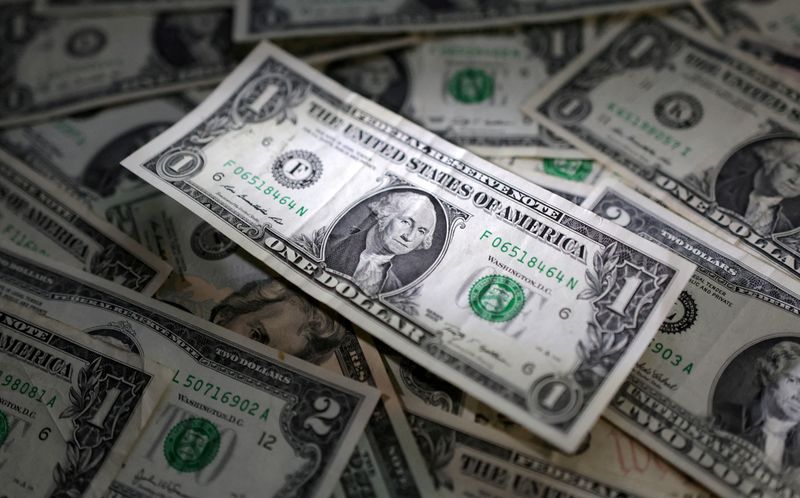
By Kevin Buckland
TOKYO (Reuters) - The dollar traded close to a two-week high versus the yen on Wednesday ahead of a highly anticipated reading of U.S. inflation that could provide clues on the pace of Federal Reserve interest rate cuts.
The Australian dollar sagged near a four-month low after a dovish tilt to the central bank's policy outlook a day earlier. That also weighed on New Zealand's kiwi, which languished near a one-year trough.
Investors will also watch headlines from China's closed-door Central Economic Work Conference, which runs this week.
The anitipodean currencies got a boost at the start of the week after Beijing pledged more fiscal and monetary support for the economy next year, although that was overshadowed by Tuesday's Reserve Bank of Australia dovish statement. RBA Deputy Governor Andrew Hauser is due to speak later on Wednesday.
The dollar eased 0.12% to 151.80 yen as of 0045 GMT, but remained close to the overnight peak of 152.18 yen, its strongest level since Nov. 27.
The dollar index, which measures the currency against the yen and five other major peers, was steady at 106.36, after rising to a one-week high of 106.63 in the previous session.
Traders currently assign 85% odds to a quarter-point rate cut by the Fed on Dec. 18.
Economists expect both headline and core consumer prices to have risen 0.3% in November, from previous increases of 0.2% and 0.3%, respectively.
"Should this scenario materialize, there could be concerns that the Federal Reserve may not be able to cut rates as quickly as hoped, potentially benefiting the U.S. dollar," said James Kniveton, senior corporate FX dealer at Convera.
In the case of Australia, "while the market anticipates early cuts, the RBA has not confirmed this plan, and there is a precedent for the market getting ahead of the RBA, only to later adjust its expectations," Kniveton said.
Traders have ramped up bets for a quarter-point reduction in February to 62%, from closer to 50% a day earlier.
The Aussie was little changed at $0.6380 after dipping to $0.63655 a day earlier for the first time since Aug. 5. The kiwi was steady at $0.57985 after sliding to $0.5792 on Tuesday, a level not seen since November of last year.
The European Central Bank policy decision on Thursday is the main one investors are focusing for the remainder of this week, with markets certain of at least a quarter-point reduction.
The euro was steady at $1.052975. Sterling was little changed at $1.2777.
The Swiss franc held firm at 0.8830 per dollar, with markets assigning 61% odds to a half-point rate cut on Thursday from the Swiss National Bank.
The Bank of Canada is seen as likely to cut by a half point later on Wednesday, which is helping to pin the loonie near a 4-1/2-year trough to the greenback. One U.S. dollar last bought C$1.4173.

